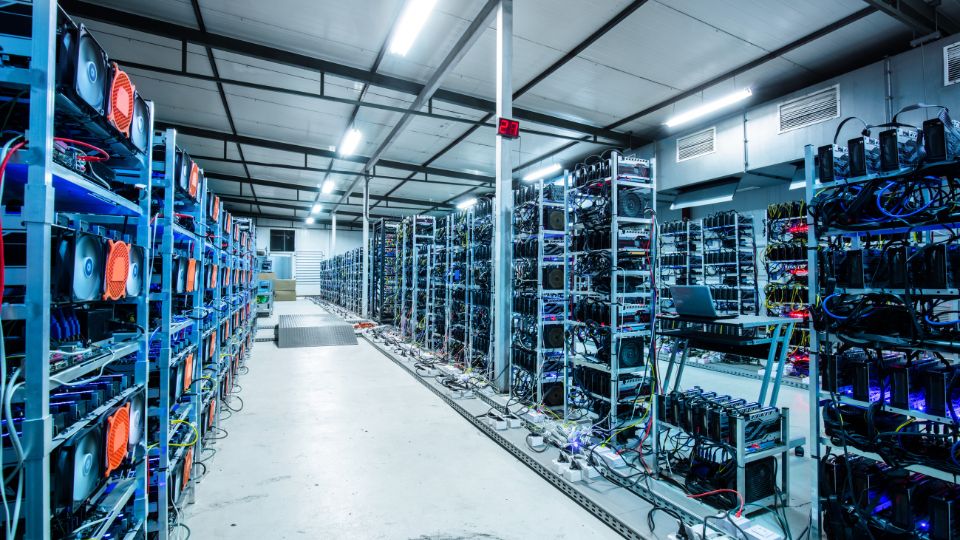Bitcoin miners play a pivotal role in the cryptocurrency ecosystem, facilitating transactions and ensuring the network’s security. Their operations, though largely unseen by everyday users, are the backbone of the Bitcoin network. To do a deep dive into Bitcoin mining, we need to explore a variety of factors. Let’s dig down (pun intended) to find out who these miners are, the mechanics behind Bitcoin mining, the top players in the industry, and the challenges and opportunities faced by miners today.
What Are Bitcoin Miners?
At its core, Bitcoin mining is the process by which new bitcoins are minted and transactions are added to the blockchain. Miners compete to solve complex cryptographic puzzles, known as “proof of work” or POW. The first to solve these puzzles is rewarded with newly minted bitcoins and transaction fees which are quite valuable. The Bitcoin mining process also secures the blockchain network, as miners validate and confirm transactions.
Think of the process as mining for gold similar to the heyday of the California gold rush. Instead of using the old picks and shovels, these modern miners use a vast array of powerful computers to extract value.
The power behind Bitcoin mining lies in specialized hardware called Application-Specific Integrated Circuits (ASICs), which are designed for the sole purpose of mining cryptocurrencies. The computational power, or hash rate, required for Bitcoin mining is immense. Hash rate is the measure of how many calculations a machine can perform per second, and higher hash rates increase the likelihood of successfully mining a block.
The Geography of Bitcoin Mining
Bitcoin mining has spread worldwide, though certain regions have become hubs due to favorable conditions. Miners typically seek out areas with cheap electricity, cool climates, and supportive regulatory environments. Until 2021, China dominated the mining landscape, controlling more than 65% of the global hash rate. However, China’s crackdown on cryptocurrency mining in mid-2021 drastically shifted the global mining map.
Today, the United States, particularly states like Texas and Wyoming, along with countries such as Kazakhstan, Canada, and Russia, have emerged as key players. The U.S. now controls the largest share of the global hash rate, accounting for nearly 40%.
Regulatory Concerns and Energy Consumption
One of the biggest challenges for Bitcoin miners is energy consumption. The Bitcoin network consumes more electricity annually than some small countries, leading to criticisms about its environmental impact. In response, some miners have sought to shift operations toward renewable energy sources, while others continue to face regulatory scrutiny over their environmental footprint.
Regulatory concerns also stem from the decentralized nature of Bitcoin itself. Governments worldwide are grappling with how to regulate the industry, with some embracing it and others banning it outright.
Bitcoin Supply: How Many Are Left?
Bitcoin’s supply is capped at 21 million coins, of which approximately 19.5 million have already been mined. This leaves around 1.5 million bitcoins yet to be minted. At today’s Bitcoin prices that’s equivalent to roughly $90 Billion. With the Bitcoin network’s halving events—where miner rewards are cut in half every four years—the remaining bitcoins will be mined more slowly, with the last bitcoin expected to be minted around the year 2140.

Top 10 Bitcoin Mining Companies
- Riot Platforms, Inc.
- Location: United States
- Stock: RIOT (NASDAQ)
Riot is one of the largest publicly traded Bitcoin mining companies in the U.S. It boasts a substantial hash rate and uses a mix of traditional and renewable energy. The company launched a website, abetterbitfarms.com, to tell its side of the story in the acquisition bid for Bitfarms.
- Marathon Digital Holdings, Inc.
- Location: United States
- Stock: MARA (NASDAQ)
Marathon Digital is a major player, focusing on sustainable mining operations. Marathon Digital recently completed a $300 million offering of convertible notes in order to purchase $249 Million of Bitcoin
- Core Scientific
- Location: United States
- Stock: CORZ (NASDAQ)
This company had faced significant financial troubles despite being one of the largest miners in the U.S. However, the company recently repaid $267 million in debt, dramatically reducing its interest burden from approximately 12.5% to 3%. This move also secured a $172.8 million cash infusion.
- Bitfarms Ltd.
- Location: Canada
- Stock: BITF (NASDAQ)
Bitfarms operates data centers in North America and South America, focusing on hydropower. Bitfarms recently announced that it will acquire Stronghold Digital Mining in a stock-for-stock merger transaction. The Transaction is valued at approximately US$125 million equity value plus the assumption of debt valued at approximately US$50 million.
- Hut 8 Mining Corp.
- Location: Canada
- Stock: HUT (NASDAQ)
Hut 8 is known for its high-efficiency mining operations, relying heavily on renewable energy. The company recently entered into a “Power Purchase Agreement” for a site in West Texas with exclusive access to 205 megawatts of immediately available power capacity and land.
- Cleanspark, Inc.
- Location: United States
- Stock: CLSK (NASDAQ)
CleanSpark Inc. recently announced that it has completed the acquisition of its first Bitcoin mining site in Wyoming with a power capacity of 30 MW This acquisition is expected to add over 2 exahashes per second (EH/s) to CleanSpark’s hashrate once operational.
- Hive Digital Technologies
- Location: Canada, Sweden, Iceland
- Stock: HIVE (NASDAQ)
Hive recently announced its plans to construct a 100-megawatt digital asset mining operation in Paraguay. The project in Paraguay will utilize green energy sourced from the Itaipu hydroelectric dam. This is expected to add up to an additional 6.5 Exahash per second (EH/s) to their Bitcoin mining operations
- Argo Blockchain
- Location: United Kingdom, United States
- Stock: ARBK (NASDAQ)
Argo narrowly avoided bankruptcy in late 2022 by selling its flagship mining facility in Texas to Galaxy Digital. However, the company looks to be in much better shape in 2024. The company recently announced that it has fully repaid the remaining $35 million balance on its high-interest Galaxy Digital debt.
.
- Genesis Digital Assets
- Location: United States, Iceland
- Ownership: Privately held
Genesis is one of the largest private mining companies, with vast operations across several continents. The company operates 20 data centers across North America, Europe, South America, and Central Asia. With a total power capacity of over 500 MW, the company has brought over 150,000 miners online.
- Foundry USA
- Location: United States
- Ownership: Privately held (Owned by Digital Currency Group)
Foundry is known for providing mining equipment financing and operates one of the largest mining pools. The company recently announced the launch of Foundry Hardware, its latest suite of products designed specifically for institutional cryptocurrency mining operations.
Recent Challenges and Industry Shifts
The Bitcoin mining industry has faced a series of challenges in recent years. For instance, Core Scientific filed for bankruptcy in 2023 largely due to high operational costs and the volatility of Bitcoin prices. Since then the company has exited Bankruptcy and is fully operational. However, this highlights the financial instability that some miners face, particularly during bear markets.
Recently, Riot Platforms has been seeking to acquire Bitfarms but their attempts have been unsuccessful so far. It will be interesting to see if this consolidation takes place in the upcoming months as the combined entity will have a significant advantage in Hash rate computing power.
Meanwhile, companies like Hut 8 Mining Corp. and US Bitcoin Corp. have recently merged to consolidate operations and bolster their market positions. Their 2023 press release provided an insight into the post-merger ambitions of the combined entity: “Hut 8 and US Bitcoin announce a merger of equals to create a preeminent digital asset mining, hosting, managed infrastructure operations, and High-Performance Computing organization.”
Geopolitical issues, such as Kazakhstan’s energy shortages and regulatory crackdowns, have also forced companies to reconsider their mining locations. However, the migration to North America, with its abundant energy resources and more favorable regulations, continues.
Related: Market Makers in Digital Currency: Who They Are and What They Do?
Why Won’t the Last Bitcoin be Mined Until 2140
The reason it will take until approximately 2140 to mine the last Bitcoin is due to the design of Bitcoin’s protocol, particularly the way the “halving” mechanism works, combined with the fixed rate of block production.
Understanding Bitcoin’s Halving Mechanism
Block Reward Halving: Bitcoin is programmed to halve the block reward (the number of new bitcoins given to miners for each block they successfully mine) roughly every four years, or every 210,000 blocks. This event is called the “halving.” When Bitcoin first launched in 2009, miners received 50 BTC per block. After the first halving in 2012, the reward dropped to 25 BTC. After the 2020 halving, the reward became 6.25 BTC. This reduction in block rewards continues every four years until the reward eventually becomes less than 1 satoshi (the smallest unit of Bitcoin) and effectively reaches zero.
Mathematical Limits: The halving ensures that the number of new bitcoins introduced into circulation decreases exponentially over time. Therefore, while there are currently about 1.5 million bitcoins left to be mined, the issuance rate will slow down significantly as halving events continue. The Bitcoin protocol doesn’t allow miners to mine more bitcoins by simply increasing their computational power (hash rate) because the total supply of bitcoins is fixed at 21 million, and the block reward is reduced in a pre-programmed manner.
Block Time: The Bitcoin network is designed to produce a new block approximately every 10 minutes. This time is controlled by a difficulty adjustment mechanism, which adjusts the complexity of the cryptographic puzzle miners need to solve. If miners add more computational power to the network, the difficulty of mining adjusts upwards, maintaining the block production rate at roughly one block every 10 minutes. So, no matter how much computational power is added, the block production rate remains consistent.
Why 2140?
Exponential Decrease in Rewards: Because the reward for mining a block gets halved every four years, the amount of Bitcoin left to be mined after each halving shrinks, making it impossible to “rush” the process. Even though the final 1.5 million bitcoins will be mined over the next 100+ years, most of these coins will be earned in increasingly smaller increments.
Total Supply Hard-Capped at 21 Million: The Bitcoin protocol strictly limits the total number of bitcoins that will ever be created to 21 million. This cap cannot be changed without consensus from the entire network, which is extremely unlikely due to Bitcoin’s decentralized nature.
Mining Difficulty Adjustments
The Bitcoin network adjusts its mining difficulty every 2,016 blocks (about every two weeks) based on the total computational power being used. If mining power increases, the difficulty increases, ensuring that blocks are still produced at the same 10-minute interval. This built-in mechanism ensures that the mining process slows down over time, matching the decreasing rewards.
It will take until 2140 to mine the last Bitcoin because the rate at which new Bitcoins are introduced into circulation decreases exponentially due to the halving mechanism, and the network’s difficulty adjustments ensure that blocks are consistently mined at the same rate regardless of increased computational power. Even if mining technology continues to advance, the design of the Bitcoin protocol prevents all bitcoins from being mined at once.
The Future of Bitcoin Mining
In the immediate future, the prognosis for Bitcoin mining is mixed. On one hand, the increasing use of renewable energy sources and potential regulatory clarity in key markets like the U.S. could provide a boost. However, the rising difficulty of mining, coupled with the limited remaining supply of Bitcoin, may squeeze profit margins for smaller operators.
In the long term, Bitcoin mining will likely consolidate into fewer, more powerful players as efficiency and scalability become key. Technological advances, such as quantum computing, could revolutionize the industry, but they also pose potential security risks. The environmental debate will continue to shape the industry, with pressure to move towards greener mining practices.
Bitcoin mining remains an essential part of the cryptocurrency ecosystem, driving both innovation and controversy. The next decade will determine how the industry evolves in response to market forces, technological advancements, and regulatory developments.





